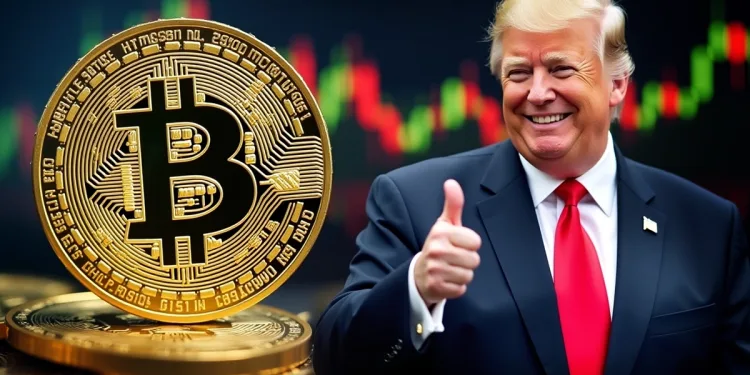- The GENIUS Act now permits U.S. banks to issue stablecoins backed by dollars, Treasuries, and equivalent reserves.
- Blockchain-based dollar transactions can now replace SWIFT transfers, enabling faster global payments for banks and governments.
- Every stablecoin will be matched by real-dollar reserves, triggering massive demand for U.S. Treasuries and reinforcing dollar dominance.
Perhaps in an attempt to shift the future of digital currencies, former President Donald Trump has U-turned to crypto institutionalization. His administration approved the creation of dollar-pegged stable-coins – digital tokens that are 1:1 backed with U.S. dollars and treasury assets.
This strategic turn follows in the wake of the enactment of the GENIUS Act, which presents a legal and technical framework for U.S. financial institutions to issue stablecoins fully collateralized with actual-dollar reserves. The turn represents not only a policy update, but a whole new paradigm for how digital assets will coexist with vintage finance. As global financial infrastructure finds its footing, the U.S. is reimagining itself at the center of the new digital monetary economy.
Stablecoins Now Anchored in U.S. Financial Infrastructure
With the existence of the GENIUS Act, banks and regulated institutions potentially have the legal clarity to leverage stablecoin-based on real U.S. dollar assets. This comprises cash reserves, short term Treasuries, and the like. Digital dollars will flow swiftly and securely among the users, filling payment gaps across the global payment system with this legal architecture in place.
This development pushes stablecoins off the speculative product category into institutional finance instruments. Payments previously based on SWIFT are settled in seconds using blockchain technology. Notably, this is done across banking systems, corporate payments, and sovereign-level transactions. The integration of real-world assets with blockchain rails opens a new era of U.S. financial policy. The U.S. is no longer observing digital money; it is now using it under traditional oversight and asset backing.
Strategic Impact on Global Currency Competition
The pivot to on-chain dollars comes as other global powers, including BRICS nations, seek alternatives to U.S. financial dominance. However, the adoption of regulated stablecoins redirects that momentum. Instead of weakening the dollar, this move reinforces it through blockchain infrastructure and verified reserves.
Every digital dollar issued will be matched by a real dollar held in a U.S. bank account. This model boosts confidence in the asset and secures its global utility. As foreign and domestic users shift to these digital instruments, trust remains rooted in the backing structure. This recalibration could redirect global liquidity into U.S. debt instruments at unprecedented speed and volume.
Surge in Treasury Demand as Digital Dollars Scale
David Sacks emphasized that the backing of stablecoins by U.S. bank-held dollars will prompt a significant demand for Treasury assets. As digital wallets expand and stablecoin usage increases, billions—and possibly trillions—could flow into U.S. Treasuries.
This inflow increases the demand of government debt that might reduce interest rates and enhance infrastructure investment. Financial institutions, in their turn, will use the digital framework to enable expedited transfers, optimized operations, and extended access to dollar-denominated technologies. This policy reversal promises to merge the strengths of crypto with the predictability of traditional finance to make them intertwined and without sacrificing regulatory oversight.














